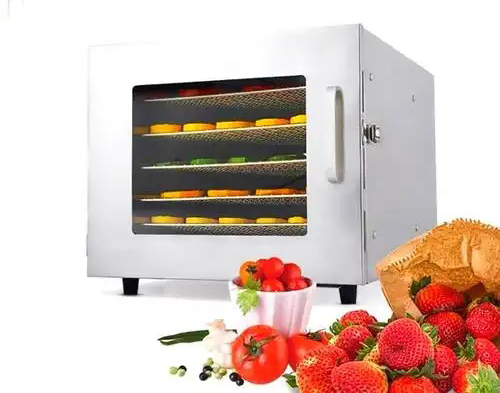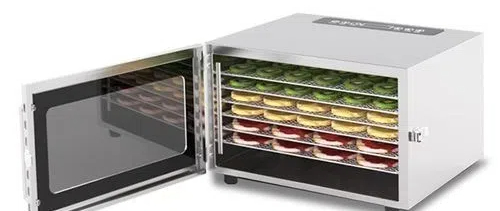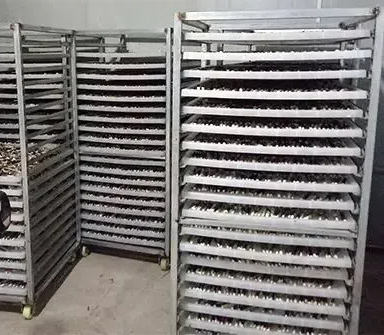
Content Menu
● Understanding Heat Pump Dryers
● Benefits of Heat Pump Dryers
● Common Reasons Why Your Heat Pump Dryer Is Not Heating Up
>> 1. Clogged Air Filters
>> 2. Faulty Heating Element
>> 3. Thermostat Issues
>> 4. Blocked Ventilation System
>> 5. Electrical Problems
● How to Diagnose and Fix Heating Issues
>> Step 1: Check Air Filters
>> Step 2: Test the Heating Element
>> Step 3: Inspect the Thermostat
>> Step 4: Clear Ventilation System
>> Step 5: Check Electrical Connections
● Preventative Maintenance Tips
● The Importance of Food Drying Machines
● Applications of Food Drying Machines
● Benefits of Food Drying Machines
● Troubleshooting Tips for Food Drying Machines
>> 1. Uneven Drying
>> 2. Excessive Noise
>> 3. Overheating
>> 4. Odors During Drying
● Conclusion
● FAQ
>> 1. What should I do if my heat pump dryer is still not heating after cleaning filters?
>> 2. How often should I clean my heat pump dryer's air filters?
>> 3. Can I repair my heat pump dryer myself?
>> 4. What are signs that my heat pump dryer needs maintenance?
>> 5. Are food drying machines worth investing in?
Heat pump dryers have become increasingly popular due to their energy efficiency and ability to dry clothes at lower temperatures. However, like any appliance, they can encounter issues, such as not heating up properly. In this article, we will explore the common causes of a heat pump dryer not getting hot and provide solutions to fix these problems. We will also discuss the importance of food drying machines, their applications, and the benefits they bring to various industries.

Understanding Heat Pump Dryers
Heat pump dryers utilize a refrigeration cycle to dry clothes. They work by extracting moisture from the clothes and then using a heat exchanger to warm the air before circulating it back into the drum. This process is efficient and environmentally friendly, making heat pump dryers a preferred choice for many households.
Benefits of Heat Pump Dryers
- Energy Efficiency: They consume less energy compared to traditional dryers, often using up to 50% less electricity.
- Gentle Drying: The lower drying temperatures help protect delicate fabrics, reducing wear and tear on clothing.
- Versatility: Suitable for various fabrics and drying needs, including wool, silk, and other sensitive materials.
- Environmental Impact: Reduced energy consumption leads to lower carbon footprints, making them an eco-friendly choice.
- Condensation Management: Many models come with built-in water tanks or drainage options that eliminate the need for external venting.
Common Reasons Why Your Heat Pump Dryer Is Not Heating Up
If your heat pump dryer is not heating up, several factors could be at play. Here are some common reasons:
1. Clogged Air Filters
One of the most frequent causes of heating issues in heat pump dryers is clogged air filters. When filters are blocked with lint and debris, airflow is restricted, preventing proper heating. Regular maintenance of air filters is crucial for optimal performance.
2. Faulty Heating Element
The heating element is responsible for generating heat in the dryer. If it malfunctions or burns out, the dryer will not produce warm air. This component can be tested with a multimeter to check for continuity.
3. Thermostat Issues
The thermostat regulates the temperature within the dryer. If it fails or becomes inaccurate, it may prevent the heating element from activating. A faulty thermostat can lead to overheating or insufficient heating.
4. Blocked Ventilation System
A blocked ventilation system can also lead to inadequate heating. If the vent is obstructed, hot air cannot escape, causing the dryer to overheat or not heat at all. Ensure that all ductwork is clear and free from debris.
5. Electrical Problems
Issues with electrical connections or power supply can affect the performance of your heat pump dryer. Check for loose wires or blown fuses that may disrupt power flow. Ensuring that your dryer is plugged in properly is also essential.

How to Diagnose and Fix Heating Issues
To effectively resolve heating issues in your heat pump dryer, follow these steps:
Step 1: Check Air Filters
- Remove and Inspect: Take out the air filters and inspect them for lint buildup.
- Clean Thoroughly: Use a soft brush or vacuum to clean the filters. Rinse them under warm water if necessary and let them dry completely before reinserting.
Step 2: Test the Heating Element
- Accessing the Element: Refer to your user manual on how to access the heating element safely.
- Multimeter Testing: Use a multimeter to test for continuity in the heating element. If there is no continuity, it needs replacement.
Step 3: Inspect the Thermostat
- Locate the Thermostat: Find the thermostat in your dryer according to your manual.
- Check Functionality: Use a multimeter to ensure it is functioning correctly. Replace if faulty.
Step 4: Clear Ventilation System
- Examine Vents: Inspect all vents for blockages.
- Clean Vents: Use a vacuum or vent cleaning brush to remove any obstructions from ducts.
Step 5: Check Electrical Connections
- Inspect Wiring: Look for any loose or damaged wires.
- Test Power Supply: Ensure that your dryer is receiving adequate power by checking circuit breakers or fuses.
Preventative Maintenance Tips
To avoid future heating issues with your heat pump dryer, consider these preventative maintenance tips:
- Regularly clean air filters after every few loads.
- Schedule annual professional maintenance checks on your dryer.
- Ensure proper ventilation by keeping ducts clear of debris.
- Avoid overloading your dryer as this can strain its components.
- Keep an eye on unusual noises or smells during operation as they may indicate underlying issues.
The Importance of Food Drying Machines
While we have focused on fixing heat pump dryers, it's essential to highlight food drying machines' role in food preservation and processing industries. These machines are designed specifically for drying fruits, vegetables, herbs, and meats while retaining their nutritional value and flavor.
Applications of Food Drying Machines
Food drying machines are widely used across various sectors:
- Agriculture: Farmers use these machines to preserve surplus produce for longer shelf life without refrigeration.
- Food Industry: Manufacturers dry ingredients for snacks, soups, and other products that require long shelf lives without losing quality.
- Home Use: Many households invest in food dehydrators for personal use, allowing them to create healthy snacks such as dried fruits and jerky at home.
Benefits of Food Drying Machines
- Nutrient Retention: Proper drying methods preserve essential vitamins and minerals in food products while enhancing flavors through concentration.
- Extended Shelf Life: Dried foods can last significantly longer than fresh counterparts without refrigeration—often months or even years—making them ideal for storage.
- Cost Efficiency: Reducing food waste by preserving excess produce saves money over time; buying in bulk becomes more economical when you can store food long-term.
- Convenience: Dried foods are lightweight and easy to store compared to fresh produce; they require no special handling or refrigeration once dried.
Troubleshooting Tips for Food Drying Machines
Just like heat pump dryers, food drying machines can also experience issues that may affect their performance:
1. Uneven Drying
If you notice uneven drying of foods:
- Solution: Rotate trays during the drying process or rearrange items periodically for even airflow distribution.
2. Excessive Noise
Loud noises coming from your food dehydrator could indicate mechanical issues:
- Solution: Check if any parts are loose or if there's an obstruction in the fan that needs clearing.
3. Overheating
If your machine overheats:
- Solution: Ensure proper ventilation around the unit; avoid placing it on surfaces that trap heat (like carpets).
4. Odors During Drying
Unpleasant smells during operation could be due to residue buildup:
- Solution: Clean all components thoroughly after each use; consider using liners when drying strongly scented foods like fish or herbs.
Conclusion
Heat pump dryers offer an energy-efficient solution for drying clothes but can experience heating issues that require attention. By understanding common problems such as clogged filters or faulty components, users can effectively troubleshoot their appliances. Additionally, food drying machines play a crucial role in preserving food quality across various industries, emphasizing their importance alongside household appliances like dryers.
By following proper maintenance practices and addressing any issues promptly, you can ensure that your heat pump dryer operates efficiently while also appreciating the value of food drying technology in our daily lives. Investing time in learning about these appliances will not only save you money but also extend their lifespan significantly.

FAQ
1. What should I do if my heat pump dryer is still not heating after cleaning filters?
If cleaning filters does not resolve the issue, check other components like the heating element and thermostat for faults that may need replacement.
2. How often should I clean my heat pump dryer's air filters?
It is recommended to clean air filters after every few loads of laundry or at least once a month to maintain optimal performance.
3. Can I repair my heat pump dryer myself?
Many minor repairs can be done by homeowners with basic tools and knowledge; however, complex repairs may require professional assistance for safety reasons.
4. What are signs that my heat pump dryer needs maintenance?
Signs include unusual noises during operation, longer drying times than usual, or clothes coming out damp even after a full cycle.
5. Are food drying machines worth investing in?
Yes! Food drying machines provide significant benefits such as nutrient retention, extended shelf life of foods, and cost savings by reducing waste.












